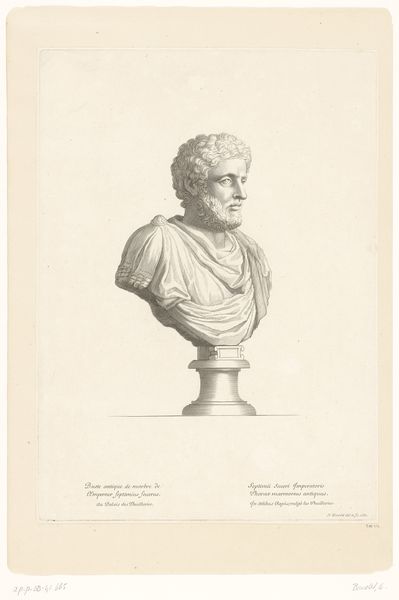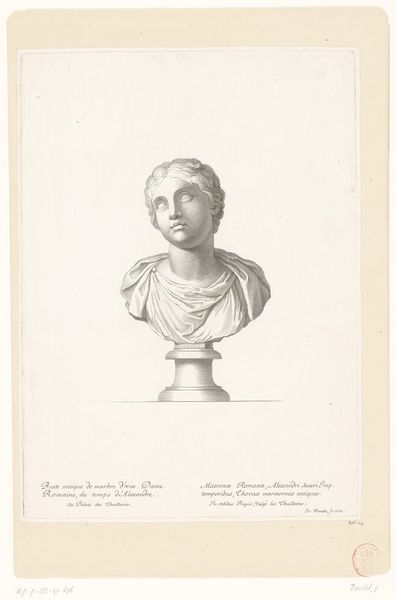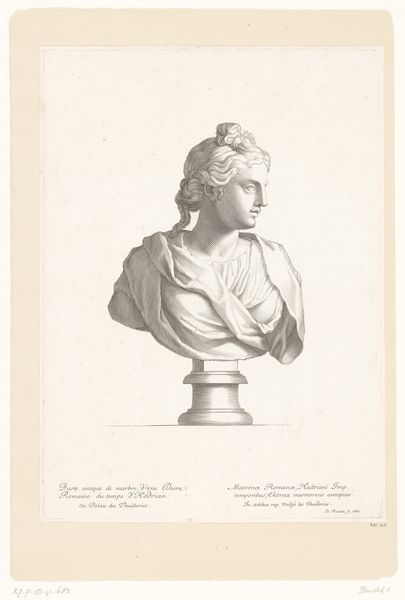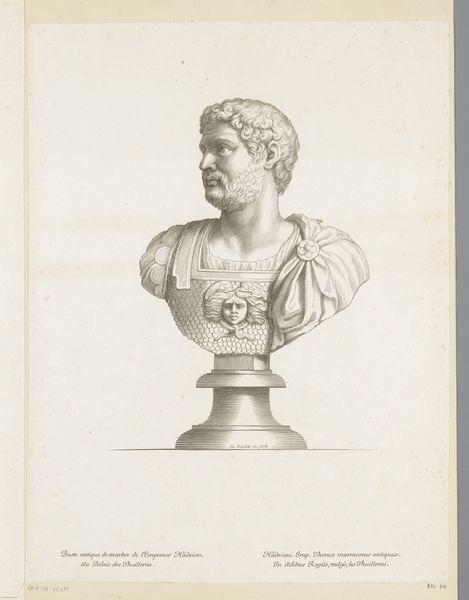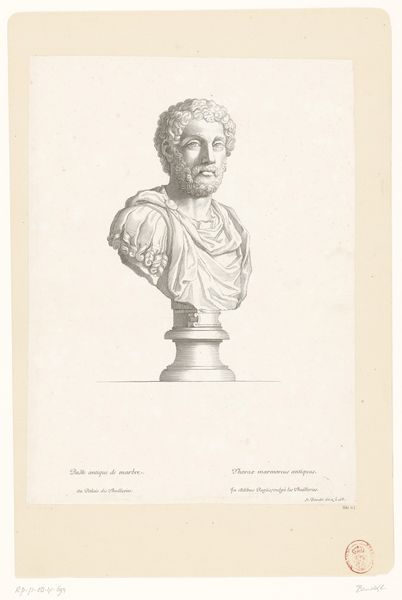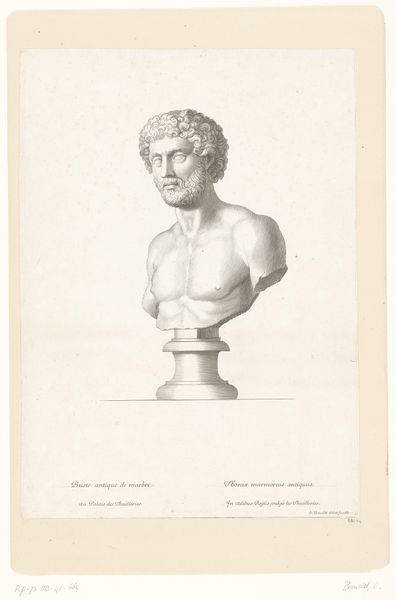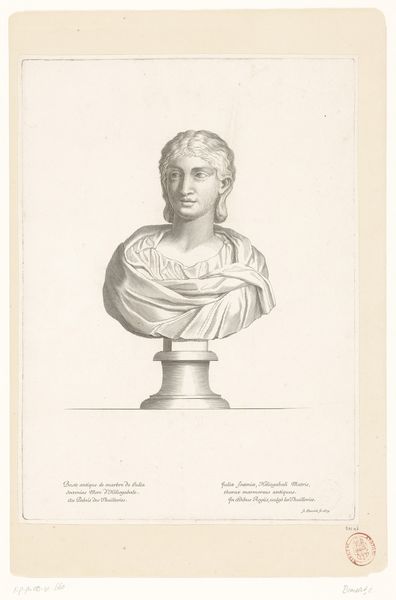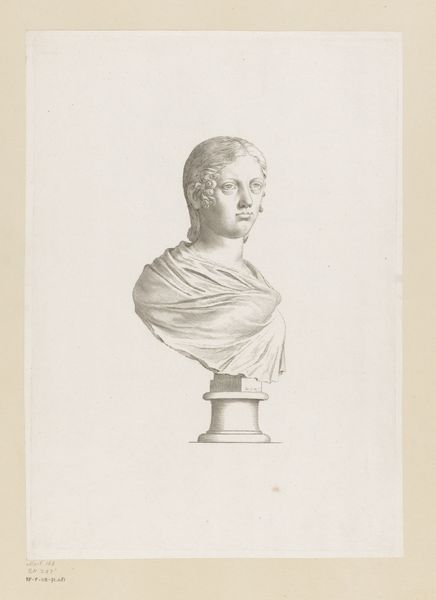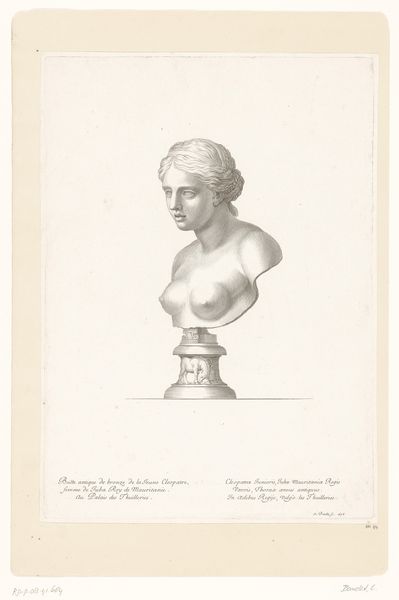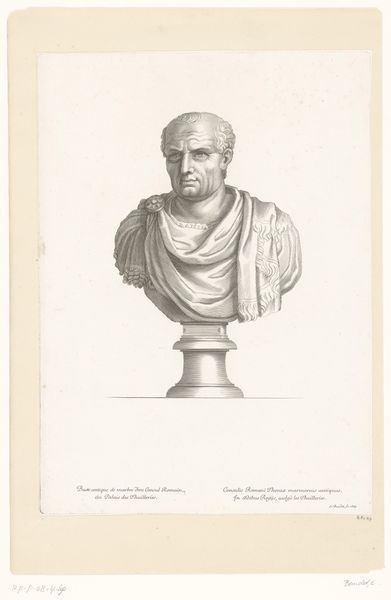
print, engraving
#
portrait
#
baroque
# print
#
old engraving style
#
romanesque
#
ancient-mediterranean
#
engraving
Dimensions: height 392 mm, width 282 mm
Copyright: Rijks Museum: Open Domain
Editor: Here we have Etienne Baudet's "Antique Bust of Geta," an engraving from 1680. The subject looks young and almost vulnerable. How do you interpret this work, especially considering its context? Curator: That vulnerability is key. It’s interesting how Baudet, working in the Baroque period, engages with this Roman subject. Geta was, in reality, a co-emperor with his brother Caracalla before being murdered by him. Think about how power, particularly inherited power, is often steeped in violence and fratricide, even within the framework of Roman history. Editor: So, the engraving might be hinting at something beyond a simple portrait? Curator: Exactly. It speaks to how representation and the circulation of images serve to both commemorate and, potentially, sanitize or challenge power structures. Is this a celebratory portrait or something more critical of imperial succession? Consider too how Roman art itself was deeply entwined with political messaging. What happens when that imagery is reproduced centuries later in a different social and political milieu? Editor: It feels like it invites a conversation about the legacies of power. Were prints like these widely circulated? Curator: Yes, engravings played a critical role in disseminating images and ideas across Europe. This print allowed a broader audience to engage with Roman history and art, shaping their understanding of the classical world and its relationship to contemporary society. What does it mean for Baudet to create a work derived from another artwork from centuries prior, which served another purpose entirely? Editor: So it becomes this layered commentary about history and representation, the artwork reflecting both past and present… That is, something made in one era may be adapted, or 'borrowed' by another era, to achieve new meanings? Curator: Precisely. And what those new meanings are—well, that's what makes art history endlessly fascinating and politically relevant.
Comments
No comments
Be the first to comment and join the conversation on the ultimate creative platform.

